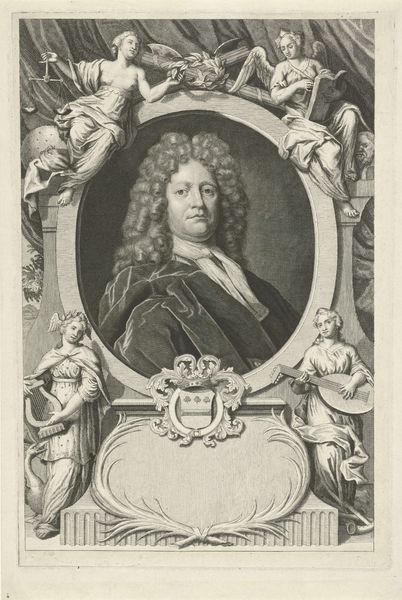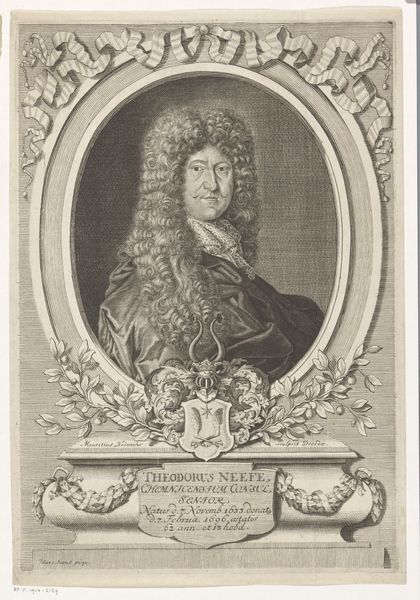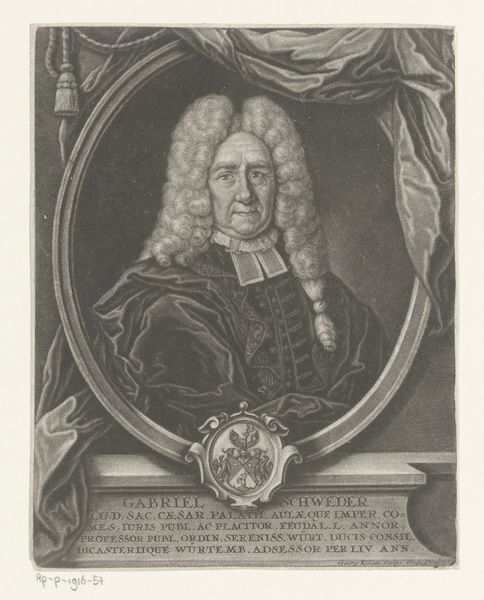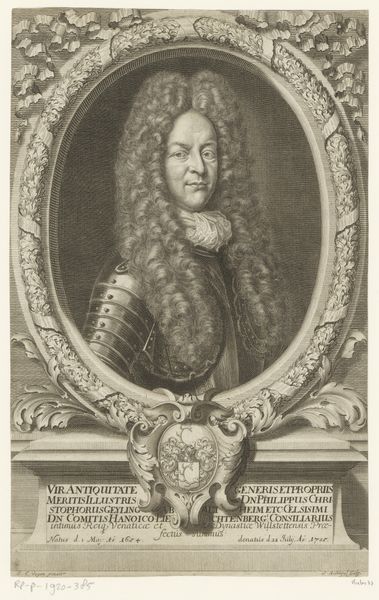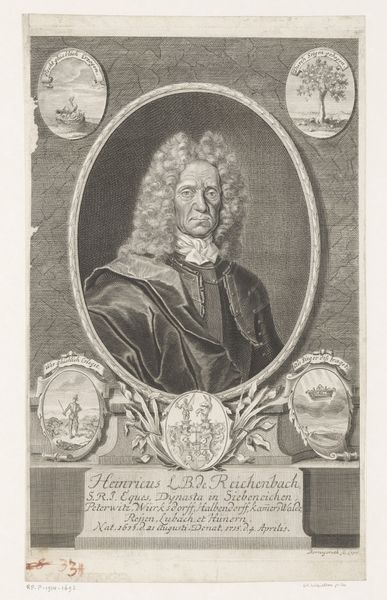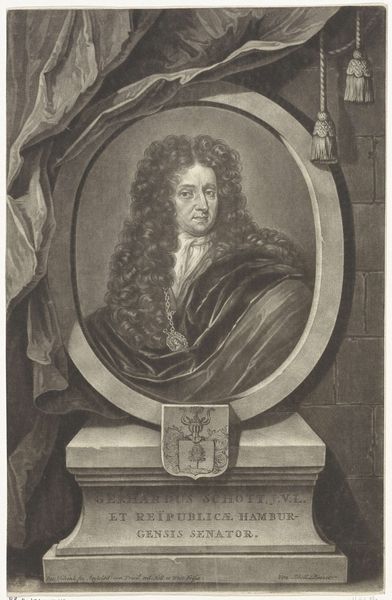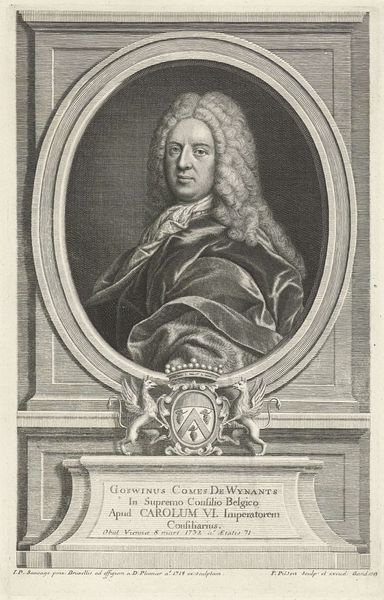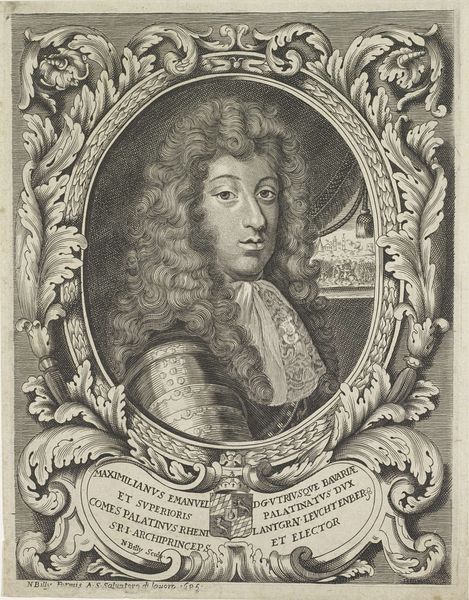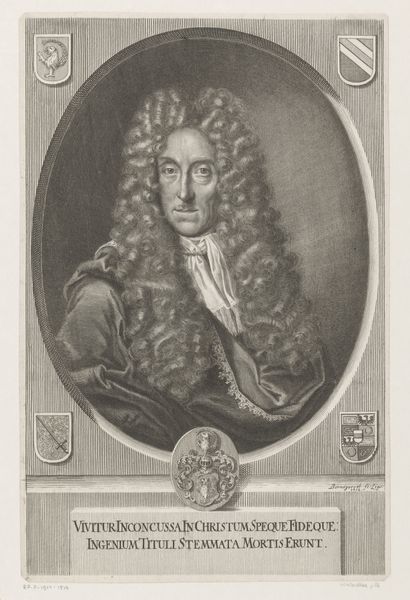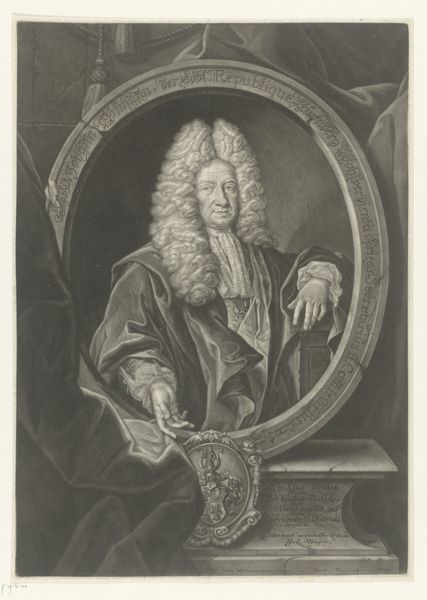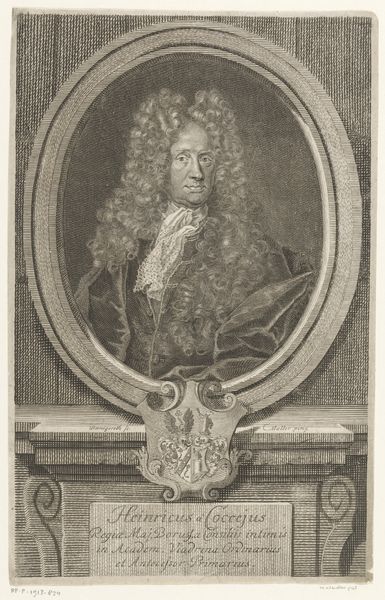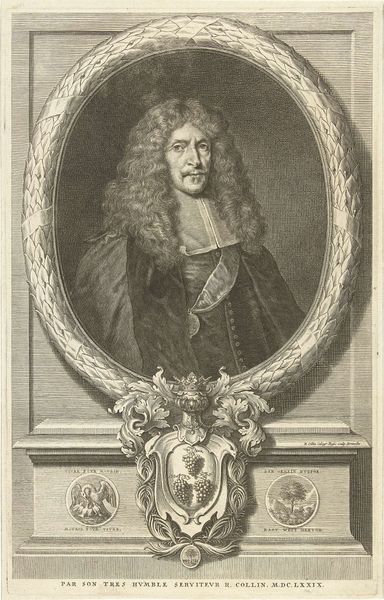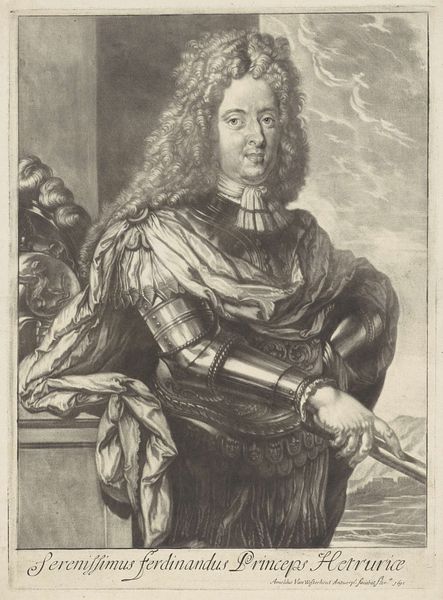
print, engraving
#
portrait
#
baroque
# print
#
charcoal drawing
#
engraving
Dimensions: height 378 mm, width 250 mm
Copyright: Rijks Museum: Open Domain
Editor: So this engraving is entitled "Portret van Franciscus Hadrianides Piens," made between 1670 and 1724 by Jacob Gole. It's quite striking, in that Baroque style – the elaborate frame, the swirling hair… And he's holding a skull. What strikes me most is the contrast between the opulence and that stark reminder of mortality. What do you see in this piece? Curator: Indeed! Look how Jacob Gole crafts not merely a likeness, but an icon. The skull is the keystone here; in the 17th century, it spoke of *memento mori*, urging contemplation on life’s fleeting nature. But is it merely morbid? The words “Prudentia” and “Vigilantia” above suggest virtues associated with wisdom – a measured response to this awareness of death. What is he guarding here? Not just temporal riches, but spiritual accounting! Notice also the family crest...what lineage is carried into posterity through this very portrait? Editor: I see what you mean! The prudence and vigilance are like guides to living with the awareness of death, and making the most of the life he has. The crest makes the work a complex message to later generations of his family. But isn't it a bit heavy-handed, perhaps even melodramatic? Curator: Ah, melodrama! Consider the Baroque era. Didactic art aims not to subtly suggest, but to powerfully persuade. Gole wields potent symbols – the skull, the inscription, even the sitter's dignified bearing. It coalesces as both a private testament and public proclamation, and creates a roadmap, a guiding symbol. How effective would this declaration of principles have been without a dash of what you term “melodrama”? Editor: That makes sense. The directness, even the theatricality, helps it stick in your mind, like a vivid emblem. It’s less about subtlety and more about a lasting message. Curator: Precisely. The power of visual language to shape understanding, even across centuries. Editor: So this isn’t just a portrait; it's a visual instruction manual for living— or, perhaps more accurately, for *dying*—well! Thanks!
Comments
No comments
Be the first to comment and join the conversation on the ultimate creative platform.
